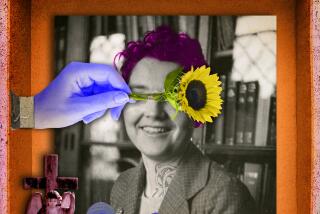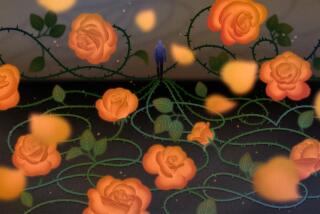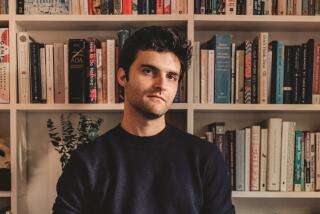A new American way of death
The late summer of 1963, I was going on 15 when my father brought me a copy of “The American Way of Death” and asked me to have a look and report back to him. It was the buzz among his fellow undertakers, a must read. But he was busy and I was bookish and baseball was over and a new school year loomed. So that early September 50 years ago I spent reading Jessica Mitford, hot off the press.
She had, in cahoots with her second husband, Robert Treuhaft, a lefty attorney with an interest in low-cost funerals for union longshoremen in San Francisco, turned a magazine article (“St. Peter Don’t You Call Me,” Frontier magazine, November 1958) into a bestseller. It was, as millions of readers would come to know, an easy and often hilarious read, and oddly comforting — to find so much to laugh at, if not actually in the face of death then in the fecklessness of mortuary sorts. Mitford avoided the face of death, the idea more easily managed than the dead, in fact and flesh.
In those days, my father would come home from the late summer swelter, strip off his striped tie and starched shirt, kick off his wingtips and sit down to my mother’s tuna noodle, saying, “We had a couple good funerals today.” Then he’d say grace and dig into his dinner. “A good funeral,” he always said, “serves the living by caring for the dead.”
“Did you read that book?” he eventually asked me, and I told him I thought it might change some things in the family business.
They are all dead now: the Mitfords and Treuhafts, my parents — long gone — and I am going on 65, having spent most of the intervening 50 years as an undertaker trying to reconcile Mitford’s distaste for the ridiculous in mortuary fashions and practice with my father’s observance of the sublime.
And as I predicted, when I was 15, things have changed, not necessarily in the ways I expected.
A cremation rate that was less than 5% is now approaching 50%. And although most cultures weave fire and its metaphors of purification, illumination and release into the ritual and religious dynamics of death, and treat cremation as an alternative to earth burial, our culture has come to view cremation, with its industrial and cost efficiencies, more often as an alternative to bother.
The dead are simply disappeared by functionaries like me, often without witness or rubric or participation by family or community, who may or may not gather later at a convenient time and uplifting place to “remember” and to “celebrate” in the name of the departed. The finger food will be haute cuisine, the music and chitchat purposefully uplifting; someone will be on hand to proclaim “closure” just before the merlot runs out, and everyone will be welcome but the one who has died. This “memorial service” or “service of remembrance” or, more recently, the ubiquitous “celebration of life,” is most notable for the absence of the dead. The corpse has been banished to a hinterland of private and efficient disposition.
These bodiless obsequies — the commemorative equivalent of a baptism without a baby or a wedding without the blushing bride — are the style of the post-Mitford years, especially among white, well-educated, well-to-do Protestant suburbanites.
For at least 50,000 years, humans wherever they lived and died had to dig a hole, build a fire, fashion a tomb, hoist a body into a tree, cast the corpse into the sea or find the place where scavenging birds could be counted on to pick the lifeless body clean. The weightiness of this “transport” required a community effort and gave rise to shared beliefs and ceremonials. Likewise the cairns and dolmens, portal tombs and pyramids, Newgrange and the Taj Mahal: primeval human labor often involving whole communities and generations.
This labor — all heft and hard duty, sore heart and large muscle, shoulder and shovel work — identified our species and our theologies in a way that no other species replicates. Thus Humanity 101, our first essential labors, were the existential ones: the pangs of nativity, and the disposition of our dead.
And just as we deal with life by dealing with the living, it is by dealing with our dead that our ideas about death began to take on real meaning. It was looking into the vast and unknowable oblivions to which we consign them — the grave, the tomb, the fire, the sea — that we first posed the questions that mark our species: Is that all there is? Why is it cold? Are we all alone? Can it happen to me? What comes next?
And within the context of these signature concerns, we have acted out the mysteries common to skeptics and believers alike. We go the distance with our dead — to the edge of whatever is or isn’t next — to the edge of the certainly changed reality.
This sacred journey has given way in our time to a kind of silliness. The pop-psyched, preplanned, awkwardly “personalized” exercises in memorial karaoke and performance art that are trending these days — Mitford and my father would surely agree — lack the gravitas and depth, the uniquely human labor our mortality requires of mortals. Our couch-potato griefs — think Princess Di or Michael Jackson — are virtual, remote, optional and distant, an amalgam of Hallmark and Disney, saccharine and tech magic.
When I ask the families of the dead we cremate to come with me to the crematory, to see their dead on the last leg of their journey, they look at me as if I’ve proffered root canal. Years of seeing the dead into the grave has taught us the gift of open ground, Mother Earth, the dust from which we come. For those who burn their dead, it should be the same with the open door of the cremation chamber. It is home-fire, warm welcome, the flame that lights the way and signals Holy Spirit works. And, in the 50 years that I’ve been doing this, no one brave enough to go the distance with their dead has ever said they wished they hadn’t done so.
A good funeral for the dead Neanderthal and the widowed New Ager remains the same — the product of an essential labor, begun at birth, worked out through life, finished in death. By getting the dead where they need to go, the living get where they need to be, intellectually, spiritually, emotionally, existentially, in fact. The rest is accessory — the boxes and bagpipers, flowers and altar calls — all knickknacks, more stuff than substance, thin gruel when heavy lifting is what’s needed to fill even the shallowest grave.
Thomas Lynch, a writer and a Michigan funeral director, is the coauthor, with the theologian Thomas G. Long, of “The Good Funeral,” published in August.
Find additional essays in the Labor Pains series. Has your work changed in recent years? Tell us about it by email at laborpains@latimes.com or on Twitter at #latlaborpains.
More to Read
A cure for the common opinion
Get thought-provoking perspectives with our weekly newsletter.
You may occasionally receive promotional content from the Los Angeles Times.










